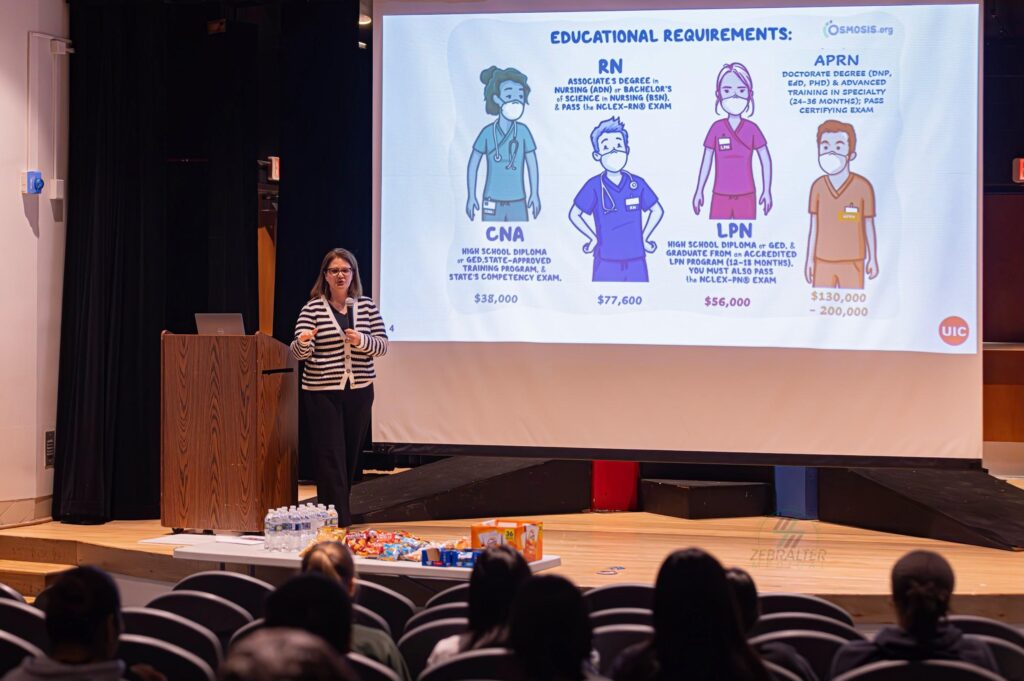
Why Diversity in STEM Matters in 2025
In 2025, diversity in STEM stands at a critical crossroads. science, technology, engineering, and mathematics (STEM) fields continue to expand at a rapid pace, influencing everything from healthcare innovation to climate solutions. Policymakers, corporations, and educational institutions recognize that these disciplines drive economic growth and shape the future of global competitiveness. However, many experts caution that widening gaps in representation threaten progress. This year, more than ever, the call to diversify STEM resonates across classrooms, boardrooms, and research labs worldwide
The Importance of STEM
STEM refers to four disciplines — science, technology, engineering, and mathematics — that form the backbone of modern innovation. These fields produce advancements in medicine, environmental protection, and technology that can transform societies. According to the Bureau of Labor Statistics, STEM occupations are projected to grow by nearly 11% from 2023 to 2033, outpacing many other industries. This expansion underscores the urgency of addressing diversity in STEM head-on to ensure no talent goes untapped.
When we talk about increasing STEM diversity, we focus on creating inclusive pipelines that welcome people of all races, genders, socioeconomic backgrounds, and abilities. Researchers have long seen the ripple effect of inclusive teams: they generate more patents, yield higher profits, and cultivate greater innovation. Despite these advantages, a lack of diversity in STEM fields remains a persistent challenge that society must confront.

The Ongoing Representation Gap
While overall STEM employment is growing, there is still a lack of diversity in STEM that slows progress. Data from the Pew Research Center shows that women and minorities remain underrepresented across crucial sectors like engineering, computer science, and physics. This disparity stems from multiple factors, including socioeconomic hurdles, limited access to mentorship, and unconscious biases in hiring. Now more than ever, organizations and educational institutions are asking: why is it important to have diversity in STEM?
The answer lies in multiple dimensions. Inclusive teams spur creativity, address societal challenges more effectively, and reflect the diverse populations they serve. For example, medical breakthroughs rely on researchers who understand complex patient demographics. As noted on Zebralter Medical’s website, bridging healthcare gaps is essential to ensuring that communities receive equitable resources and treatments. Our mission and projects showcase how equitable access to scientific developments can improve health outcomes, especially in underserved areas.
Why Diversity Matters Most in 2025
By 2025, shifting demographics and the escalating demand for tech solutions call for bold steps to increase diversity in STEM fields. With aging populations worldwide, healthcare innovation must integrate insights from various cultural perspectives. According to studies, interdisciplinary collaboration — especially across diverse teams — is crucial for tackling global problems like pandemics and climate change. Simply put, why do we need diversity in STEM? We need it to drive holistic, equitable solutions that can adapt to complex, real-world contexts.
Experts like Zebralter Medical’s Lota Ojiako explain how targeted support can promote inclusion. By promoting STEM and advocating for community-based healthcare initiatives, Zebralter Medical provides a platform where students, scientists, technologists, and healthcare professionals collaborate toward a shared goal. Our work embodies a growing trend: using STEM expertise to address inequalities while ushering in new medical breakthroughs.

Benefits of Boosting Diversity in STEM
Fostering inclusive environments in science and technology yields a multitude of advantages. Below is a comprehensive list of key benefits:
- Innovation and Creativity: Diverse perspectives broaden problem-solving approaches, increasing the likelihood of groundbreaking discoveries.
- Enhanced Team Performance: Inclusive teams tend to communicate better, resulting in higher productivity and more efficient project outcomes.
- Better Financial Returns: Companies with diverse leadership often report higher profitability, reflecting the economic advantages of inclusion.
- Societal Impact: Research and development that includes varied cultural and demographic viewpoints is more likely to address the needs of all communities.
- Talent Retention: When organizations commit to diversity, they attract and retain skilled workers who want an inclusive work culture.
- Improved Reputation: Institutions known for equitable practices gain trust from customers, investors, and potential employees.
These benefits directly influence STEM’s ability to remain at the forefront of innovation. Initiatives like Zebralter Medical’s Student Portal help students access resources to pursue STEM education, ensuring that this field continues to become more diverse.

Real-World Data on STEM Diversity
Concrete data supports the need for more diverse representation. The National Science Board reveals that women make up just 34% of the science and engineering workforce worldwide, while underrepresented minorities hold less than 25% of STEM jobs in the United States. These STEM diversity statistics illustrate how far we still have to go to close representation gaps. Investments in early STEM education, scholarship programs, and inclusive recruitment efforts stand out as effective ways to address the issue.
Moving Forward: Action Steps
To combat the lack of diversity in STEM fields, experts recommend targeted solutions that start early and continue throughout professional careers:
- K-12 Outreach: Offer engaging STEM programs for students from diverse backgrounds.
- Mentorship and Sponsorship: Pair emerging scientists and technologists with established leaders in the field.
- Equitable Hiring Practices: Use blind recruitment methods and diverse hiring panels to mitigate bias.
- Retention and Advancement: Foster inclusive cultures where underrepresented voices feel valued and heard.
- Policy Reforms: Support legislation and funding initiatives that expand access to STEM education and careers.
Through these measures, individuals and organizations can help rectify the lack of diversity in
STEM and ensure that tomorrow’s innovators reflect the full spectrum of human experience.

As 2025 unfolds, the importance of diversity in STEM becomes more pertinent than ever. STEM fields hold the keys to tackling the planet’s most pressing issues, from climate resilience to public health. When diverse talent pools unite in research labs and tech hubs, they produce ideas that transcend narrow viewpoints and traditional boundaries. This transformative power underscores why diversity is needed in STEM — the future of innovation depends on it.
By partnering with organizations like Zebralter Medical, donating to research initiatives, and championing inclusive policies in academia and industry, we can move closer to a world where every aspiring scientist and engineer has the chance to thrive. The stakes are high, but so are the rewards. Ensuring that all voices are heard in STEM will shape a healthier, more equitable, and more innovative tomorrow.
At Zebralter Medical, we are focused on connecting Black and Brown healthcare professionals to communities of color and beyond through our free healthcare app Melanin Medical Specialties. Melanin Medical Specialties is the number 1 app in the nation to connect mentees and mentors while answering STEM and career questions.
We aim to make Melanin Medical Specialties the premier app for finding Black healthcare professionals in the nation, while also creating increased awareness of science as a career option in underrepresented minorities. We are focused on bringing STEM careers to elementary schools and high schools across the nation. In addition, we support college students pursuing degrees in STEM with scholarships, helping to bridge the STEM gap, with the goal of decreasing, and ultimately eliminating, healthcare disparities in communities of color. You can learn more about what we do or support our critical work with a donation.

